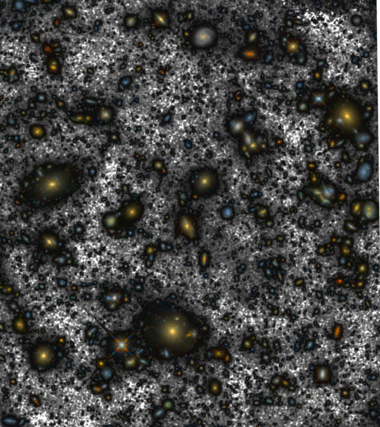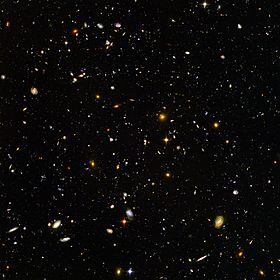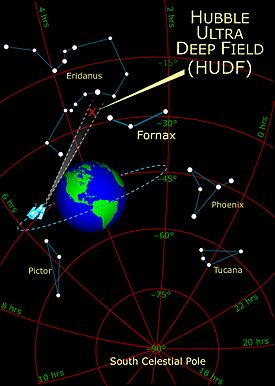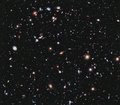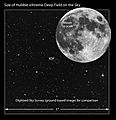Hubble Ultra-Deep Field facts for kids
The Hubble Ultra Deep Field, or HUDF, is a very special picture of a tiny part of space. It looks towards the constellation Fornax. This amazing image shows us the universe as it was about 13 billion years ago. At that time, the universe was only about 800 million years old!
It took the Hubble Space Telescope a long time to capture this image. From September 2003 to January 2004, Hubble spent over three months collecting light. This makes it one of the deepest images of the universe ever taken by humans.
The HUDF picture contains about 10,000 galaxies. Scientists chose this specific spot in the sky because it doesn't have many bright stars close by. This helps them see the faint, far-away galaxies more clearly. While some of these distant galaxies can be seen with ground telescopes using infrared light, Hubble is unique. It can see these very distant objects using visible light.
The area of sky covered by the HUDF is tiny. Imagine holding a 1 by 1 millimeter square of paper one meter away from your eye. The HUDF covers an even smaller patch of sky than that! It's like looking through a very small keyhole into the distant universe.
To create this image, Hubble took 800 separate pictures. These pictures were taken over 400 orbits around Earth. The telescope spent a total of 11.3 days gathering light for the main camera (ACS). It also spent 4.5 days for another camera that sees infrared light (NICMOS).
Contents
Newer Versions of the Deep Field
Scientists keep making the Hubble Ultra Deep Field even better. They use new methods and combine more data.
eXtreme Deep Field (XDF)
On September 25, 2012, NASA released an improved version. They called it the eXtreme Deep Field (XDF). The XDF shows galaxies that are even older. It goes back 13.2 billion years in time. This new image even revealed a galaxy that might have formed only 450 million years after the Big Bang.
Full Light Spectrum HUDF
Later, on June 3, 2014, NASA released another special Hubble Ultra Deep Field image. For the first time, this image combined light from ultraviolet to near-infrared wavelengths. This gives scientists a more complete picture of the galaxies.
ABYSS Hubble Ultra Deep Field
On January 23, 2019, the Instituto de Astrofísica de Canarias released an even deeper infrared version. They named it the ABYSS Hubble Ultra Deep Field. This new image used better ways to process the infrared data. It carefully removed background light around the largest galaxies. Because of this, some galaxies in the image now appear almost twice as big as they did before!
Related Space Pictures
Images for kids
-
XDF size compared with the size of the Moon
See also
 In Spanish: Campo ultraprofundo del Hubble para niños
In Spanish: Campo ultraprofundo del Hubble para niños


